 |
 |
 |
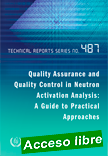 |
Quality Assurance and Quality Control in Neutron Activation Analysis: A Guide to Practical Approaches
Technical Reports Series No. 487 ¦ English ¦ STI/DOC/010/487 ¦ 51 pages ¦ Date published: 2022
Neutron Activation Analysis (NAA) is the most common technique used in research reactors worldwide. The IAEA aims to enhance quality assurance in NAA laboratories by supporting annual proficiency testing, by developing and offering relevant e-learning as well as specialized publications. This publication, which is based on the most up to date relevant ISO guides and international practices, provides practical guidance on quality assurance (QA) and quality control (QC) in NAA laboratories.
|
It is intended to be used in the day-to-day work of NAA at research reactors. Potential sources of errors and associated QA/QC actions are detailed for all main areas of NAA practice. Easy to use tables are provided, intended for direct reference in the laboratory.
|
 |
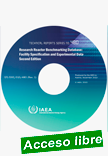 |
Research Reactor Benchmarking Database: Facility Specification and Experimental Data (Revision)
IAEA Technical Reports Series No. 480 (Rev.1) ¦ English STI/DOC/010/480 ¦ Date published: 2022
A revised edition of IAEA Technical Reports Series No. 480, this publication includes all the data from the first edition, augmented with fourteen new benchmarks. It provides a set of experimental data that is suitable for benchmarking and validation of neutronic, thermohydraulic, fuel burnup and material activation computational methods and tools employed for improved utilization, operation and safety analysis of research reactors.
|
It contains the facility specifications, experiment descriptions, and corresponding experimental data for sixteen different research reactors covering a wide range of research reactor types, power levels and experimental configurations. It has been written as a resource for research reactor staff performing reactor physics calculations and individuals working on the design and planning of research reactors and their modifications. It may also prove useful to regulators involved in licensing of research reactors.
|
 |
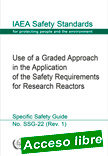 |
Use of a Graded Approach in the Application of the Safety Requirements for Research Reactors
IAEA Safety Standards Series No. SSG-22 (Rev. 1) ¦ English STI/PUB/2035 ¦ 91 pages ¦ Date published: 2023
This Safety Guide considers the application of a graded approach throughout the lifetime of a research reactor (site evaluation, design, construction, commissioning, operation and preparation for decommissioning), including utilization and experiments that are specific features of research reactor operation.
|
A major aspect of this Safety Guide involves the use of a graded approach in the application of the safety requirements for the design and operation of research reactors, so that the fundamental safety objective to protect people and the environment from harmful effects of ionizing radiation is achieved. It is intended for use by operating organizations, regulatory bodies and other organizations involved in the design, construction and operation of research reactors. This Safety Guide is a revision of IAEA Safety Standards Series No. SSG-22, which it supersedes.
|
 |
 |
Clinical Applications of SPECT–CT
IAEA Human Health Series No. 41 ¦ English ¦ STI/PUB/1971 ¦ 97 pages ¦ Date published: 2023
Single photon emission computed tomography (SPECT) has been used in routine diagnostic applications and in research since the 1980s. In the following decades, as the clinical application of hybrid imaging has grown, SPECT–computed tomography (SPECT–CT) has demonstrated improved patient management and become fully integrated in the routine diagnostic approach to a variety of clinical indications, including both oncologic and non-oncologic diseases.
|
This IAEA Human Health Series publication presents a review of the published data from recent applications of SPECT–CT across nine different clinical scenarios including neurology, orthopaedics, endocrinology and cardiology, to demonstrate the variety of hybrid imaging in nuclear medicine and support decision making when allocating resources in the health care system. It provides a relevant source of information for nuclear medicine physicians, radiologists and clinical practitioners.
|
 |
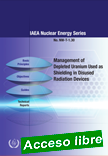 |
Management of Depleted Uranium Used as Shielding in Disused Radiation Devices
IAEA Nuclear Energy Series No. NW-T-1.30 ¦ English ¦ STI/PUB/2020 ¦ 145 pages ¦ Date published: 2023
In the context of the safe management of disused sealed radioactive sources, an important and emerging issue of immediate concern is the management of depleted uranium (DU) contained in radiation shielding materials, as potential radioactive waste. This publication presents relevant information on technical issues and factors, as well as specific Member State experiences leading to the identification of potential options for the management of DU shields.
|
Various options for safe, secure and cost-effective solutions have been explored, ranging from returning to manufacturer, including reuse, recycling, storage and disposal in licensed facilities.
|
 |
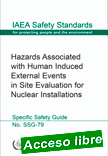 |
Hazards Associated with Human Induced External Events in Site Evaluation for Nuclear Installations
IAEA Safety Standards Series No. SSG-79 ¦ English ¦ STI/PUB/2036 ¦ 91 pages ¦ Date published: 2023
Hazards associated with human induced external events (HIEEs) need to be considered in the evaluation of sites for nuclear installations, in the design of new nuclear installations and in the operation of existing nuclear installations. This Safety Guide provides recommendations on the evaluation of these hazards in order to meet the requirements set out in IAEA Safety Standards Series No. SSR-1, Site Evaluation for Nuclear Installations.
|
It provides a process for identification of source of HIEEs, screening of hazards using distance and probability, and detailed evaluation to establish hazard and load characterization parameters. This publication is intended for use by organizations involved in the identification, screening, analysis, evaluation and review of hazards associated with HIEEs, and the provision of technical support, as well as regulatory bodies.
|
 |
 |
PET-CT for the Management of Cancer Patients: a Review of the Existing Evidence
IAEA Human Health Series No. 45 ¦ English ¦ STI/PUB/1993 ¦ 79 pages ¦ Date published: 2023
While the use of positron emission tomography–computed tomography (PET–CT) is a standard of care in oncological practice in many developed countries, it is still limited in many low to middle income nations. To make reliable information more widely available, the IAEA convened an expert consultant group to review, based on the most recent developments of PET radiopharmaceuticals, Human Health Series No. 9, Appropriate Use of FDG-PET for the Management of Cancer Patients.
|
This, the resulting publication, provides up to date recommendations on the optimal use of PET–CT imaging procedures in oncology. It is written for policy makers and decision makers who allocate resources dedicated to the health care system, a critical issue in the development of nuclear medicine in low and middle income countries. It will also benefit medical imaging practitioners as well as referring physicians.
|
 |
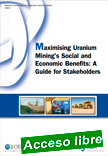 |
Maximising Uranium Mining’s Social and Economic Benefits: A Guide for Stakeholders
OECD - Nuclear Energy Agency ¦ NEA No. 7547 ¦ Date published: 2023 ¦ 104 p.
The transformative activity of mining has numerous economic, social and environmental impacts that can be both positive and adverse for communities, ecosystems and economies. As the uranium industry begins to address negative perceptions and legacies associated with past activities, environmental, socioeconomic and governance aspects of the uranium mining life cycle are gaining increased attention from investors, communities, regulators and other stakeholders.
|
While environmental and human health and safety concerns often dominate stakeholder engagement programmes and public conversations about uranium operations, less public discussion and analytical research are typically devoted to the socio-economic aspects. This was the basis for this report. Through an examination of case studies from several countries the aim is to clarify how the numerous activities related to uranium mining affect various aspects of socio-economic development – including employment, supply chain investments, exports, taxes and royalties, innovation, infrastructure, education and medical care. This report’s inventory of leading practices is intended to inform public debate on uranium mine development and provide policymakers with a framework of approaches to maximise the social and economic benefits of uranium mining projects.
|
 |
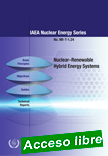 |
Nuclear–Renewable Hybrid Energy Systems
IAEA Nuclear Energy Series No. NR-T-1.24 ¦ English ¦ STI/PUB/2041 ¦ 74 pages ¦ Date published: 2023
Nuclear energy and renewables are the two principal options for low carbon energy generation. However, synergies among these resources have yet to be fully exploited, and the advantages of directly integrating these generation options are being explored. Nuclear-renewable hybrid energy systems consider opportunities to couple these energy generation sources to leverage the benefits of each technology to provide reliable, sustainable electricity to the grid and to provide low carbon energy to other energy use sectors.
|
This publication describes the potential use of nuclear and renewable generation in coordinated, and in some cases tightly coupled, configurations to support various applications beyond electricity production, including desalination, hydrogen production and district heating. Where available, case studies are presented to describe relevant market conditions and trends, and considerations for implementation are outlined, including gaps that require additional technology and regulatory developments.
|
 |
 |
Milestones in the Development of National Infrastructure for the Uranium Production Cycle
IAEA Nuclear Energy Series No. NF-G-1.1 ¦ English ¦ STI/PUB/2019 ¦ 163 pages ¦ Date published: 2023
Many IAEA Member States have expressed interest in introducing or reintroducing uranium mining and related activities for the purposes of nuclear fuel production, and so contribute to meeting energy needs. This publication is intended to be used as guidance on how to evaluate the progress toward establishing or re-establishing a national uranium production programme and to aid in the planning steps necessary to develop the national infrastructure requirements for uranium production in a Member State.
|
The publication includes consideration of four phases of successive development in the uranium production cycle to achieve four corresponding milestones. The four phases are: (i) exploration, (ii) construction/ commissioning of a uranium mine and processing facility, (iii) safe operation of a uranium mine and processing facility, and (iv) decommissioning and remediation. Within each phase sixteen aspects or issues are identified that ought to be addressed to achieve each milestone in the development of the uranium production cycle. The publication will be of interest to government decision makers and decision influencers, such as advisors in relevant government departments, regulatory bodies involved in regulation of uranium mines and processing facilities, and the uranium mining/processing industry and researchers.
|
 |
| |
|
|

|
|
|
| |
|
|
| |
| |
|
|
| |
| |
|
|
| |
| |
|
|
|
| |
| |
